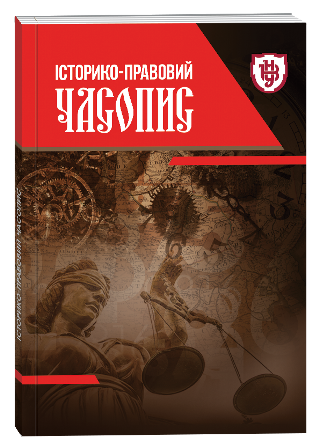THE USE OF ALTERNATIVE SANCTIONS IN INTERNATIONAL PENITENTIARY LAW
DOI:
https://doi.org/10.32782/2409-4544/2021-1/11Keywords:
humanization, penitentiary institution, prisoners, purpose of the penalty, criminal offence, non-custodial sanctions.Abstract
The article analyses international standards of using alternative non-custodial sanctions. In the process of crime prevention the preventive value of punishment is determined not by its cruelty, but by its inevitability. The punishment more severe than the convict deserves, undermines the faith in its justice. Negative socio-economic, moral, psychological, demographic and medical consequences prove that imprisonment is not the best way in combating the crime. It was found that all types of alternative sanctions used in foreign countries can be divided into several groups: a) sanctions related to the material influence on the convict; b) sanctions that do not provide for supervision and control; c) sanctions related to the exercise of control over convicts by special bodies. Preconditions for the introducing of alternatives to imprisonment are: low efficiency of imprisonment, inhumane nature of imprisonment, economic feasibility of alternatives. The essence of alternative punishments is to try to restore social justice, violated by the crime within society itself, without subjecting the offender to the measures of criminal jurisdiction. The most comprehensive international instrument in the field of alternatives to imprisonment is the Tokyo Rules, which provide for a wide range of alternatives to imprisonment. It is noted that the introduction of alternative punishments depends not only on socio-legal phenomena and many non-legal circumstances (economy, social structure of society, state system, etc.), but also reflects the state policy in the fight against crime at a particular historical stage. High rates of recidivism among persons previously serving sentences in penitentiary institutions, significant material costs of the penitentiary system indicate the need for research, the results of which will improve criminal and penitentiary legislation and practices aimed at reducing repression and humanization, development of alternative types of imprisonment.
References
Черкасов С.В. Кримінологічна концепція альтернативних мір покарання : автореф. дис. ... канд. юрид. наук : 12.00.08. Одеса, 2005. 19 с.
Хромых Е.В. Альтернативные лишению свободы уголовные наказания: теория и прак- тика назначения и исполнения : автореф. дис. … канд. юрид. наук : 12.00.08. Ростов-на- Дону, 2005. 28 с.
Prison Trends (2020). URL: http://www.penalreform.org/resource/global-prisontrends- 2020 (дата звернення: 09.06.2021).
Крецул В.І. Деякі проблемні питання застосування альтернативних видів покарань в Україні. Людина і закон: публічно-правовий вимір : матеріали Міжнар. наук.-практ. конф. «VII Прибузькі читання», 25–26 листопада 2011 р. Миколаїв, 2011. С. 154–156.
Дикаева М.С. Назначение и исполнение уголовных наказаний в России: криминологический анализ : дисс. ... канд. юрид. наук : 12.00.08. Калининград, 2016. 271 с.
Богатирьов І.Г. Кримінальні покарання, не пов’язані з позбавленням волі (теорія і практика їх виконання кримінально-виконавчою інспекцією) : автореф. дис. ... докт. юрид. наук : 12.00.08. Київ, 2006. 32 с.
Мозгова В.А. Поняття альтернативних покарань: теоретичний аспект. Держава і право. 2012. Вип. 55. С. 55-59.
Заручьевский К.В. Цели применения мер, несвязанных с тюремным заключением, в контексте Токийских правил. Безопасность уголовно-исполнительной системы. 2011. № 1 (13). С. 49‒52.







